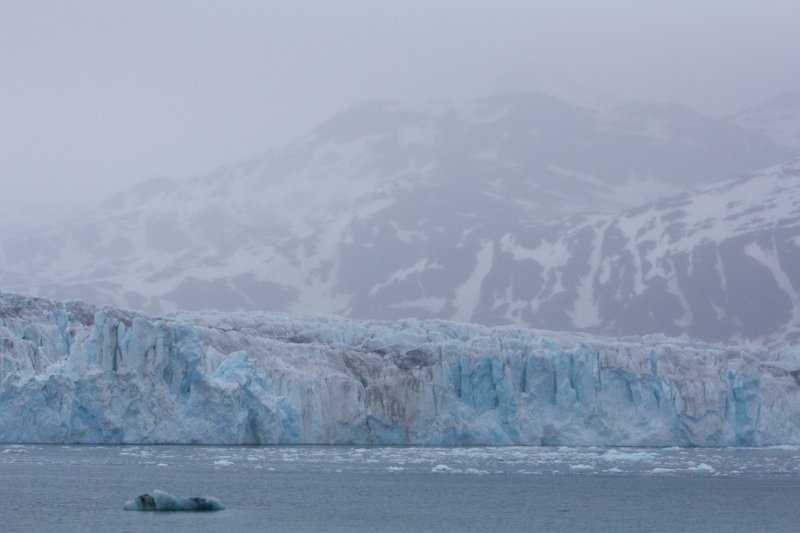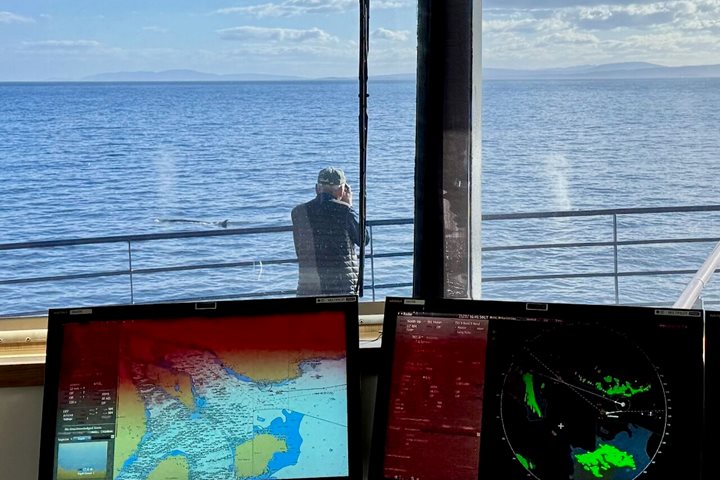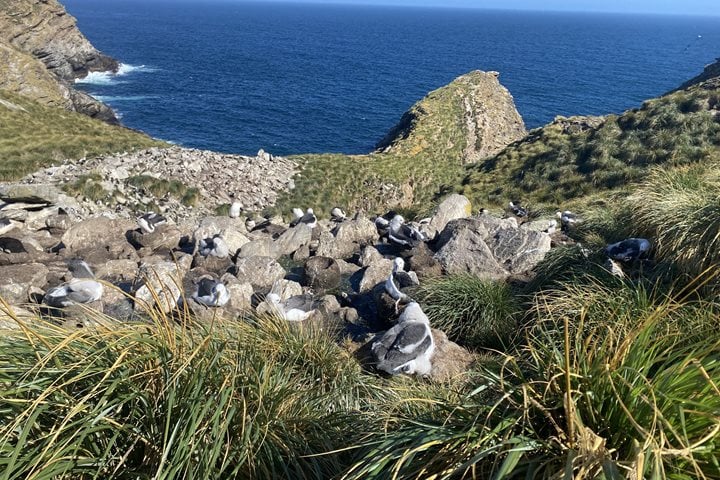An essential part of expedition travel is being flexible to changing conditions that may arise. Many times, due to weather, waves, or wind, landings or excursions need to be changed. But I don’t think I have ever had to change a plan for the reason we did today—because there was too much wildlife. Yes, too much wildlife! The plan was to land at Gold Harbor and enjoy the seals, glaciers, and penguins there. However, on arriving we discovered there was nowhere to land as elephant seals had covered the entire beach! Males were defending harems on every piece of beach, so it was on to Plan B.
Later in the morning, Plan C materialized as we spotted some whales and it was time to enjoy a bit of whale watching. Two humpbacks were feeding on krill just below the surface, spending long periods of time at the surface. One of them had a very interesting tail as part of the left tip was missing—probably the result of an encounter with killer whales. Then it was back to Plan B as we cruised close to the glacier at the end of Cumberland Bay. Nordenskjöld Glacier is at least a mile wide with a towering face. Many icebergs were floating in front of the face, and the glacier disappeared far into the mist and fog. This was a very nice alternative for sure.
In the afternoon, it was time to explore the historical side of the island. We pulled into the old whaling station of Grytviken and all convened at the grave of Sir Ernest Shackleton where we had a toast to show our respect for this renowned explorer. From here, we explored the abandoned whaling station to learn the early history of people on South Georgia. A sure highlight was the amazing museum, including the tiny replica of the James Caird that Shackleton and his crew sailed across from Antarctica. South Georgia pintail ducks fed amongst the derelict whaling vessels, showing a bit of the past and the bright future of South Georgia.







